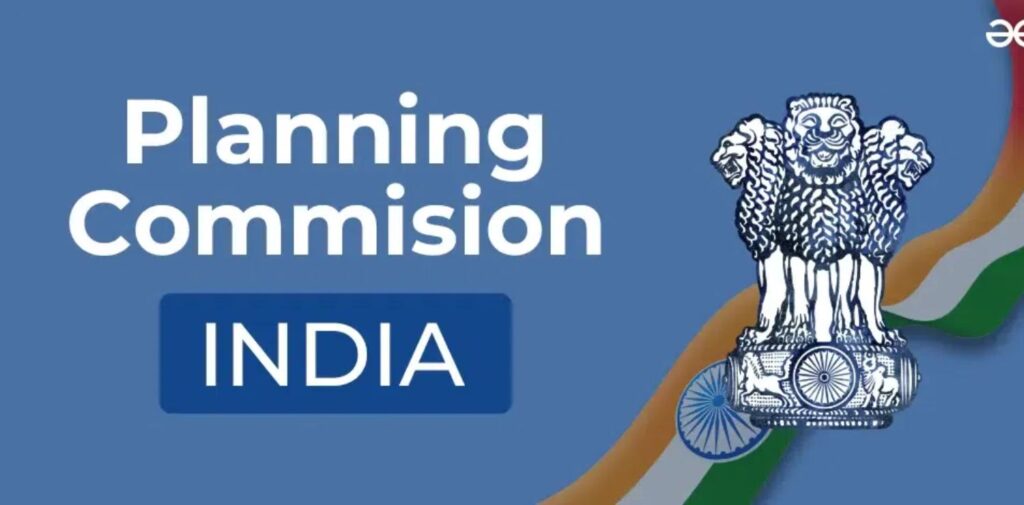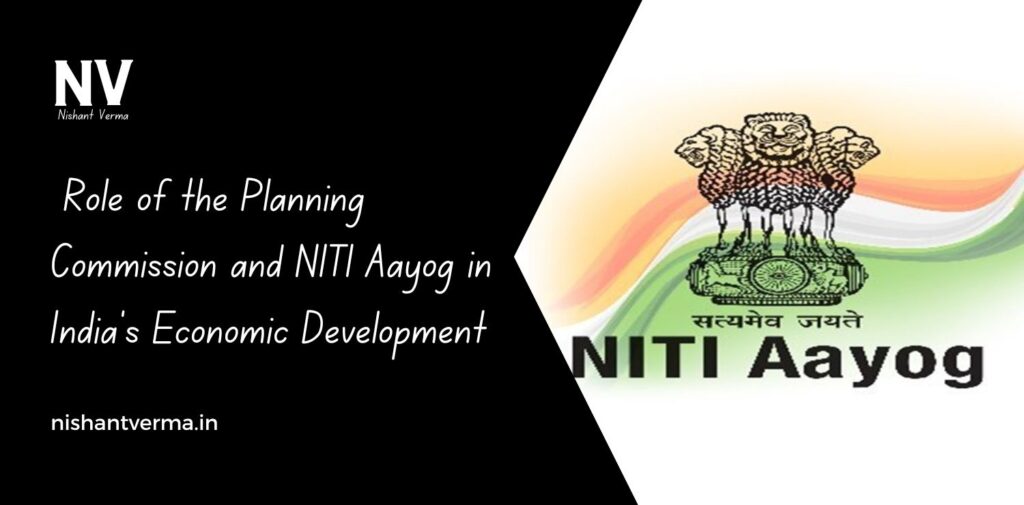India, after gaining independence in 1947, was faced with many challenges. One of the biggest challenges was to develop the country economically. To do this, the government of India needed careful planning, ideas, and strategies to improve the lives of its people and make the country grow. To help with this task, two important institutions were set up in India’s history: the Planning Commission and NITI Aayog. Both of these organizations played (and continue to play) a major role in India’s development.
Let’s explore how these two institutions worked, what they did for India’s economy, and how they changed the country’s growth over time.
The Early Days: Setting Up the Planning Commission
When India became independent, the country was in poor economic shape. There was poverty, unemployment, and many people lived in villages with very little access to basic resources like education, healthcare, and clean water. The government needed a solid plan to improve the economy and provide a better future for its citizens.
In 1950, the Planning Commission was set up by the first Prime Minister of India, Jawaharlal Nehru, with the help of economist M. Visvesvaraya and other leaders. The main job of the Planning Commission was to create plans for the country’s development. These plans were called Five-Year Plans, where the government would set goals for the country’s growth every five years.
The Planning Commission worked closely with the government to decide how to use India’s resources (such as money, land, and labor) wisely and fairly. The Commission helped in creating various sectors of development like agriculture, industry, transport, and education. These plans would guide how much money should be spent on building roads, hospitals, schools, and factories, and also where to invest in different regions of India.

Key Features of the Planning Commission’s Role
- Five-Year Plans: The Planning Commission created these plans to guide India’s economic growth. For example, the first Five-Year Plan (1951–1956) focused on improving agriculture and irrigation. Later plans focused on industries, energy, and social welfare.
- Resource Allocation: The Commission made sure that resources were used efficiently and fairly. It would suggest how money should be spent in different areas like education, health, and infrastructure.
- Focus on Poverty and Unemployment: The government’s goal was to reduce poverty and create jobs for millions of people. The Planning Commission played a key role in creating programs that would provide employment and improve living conditions for the poor.
- National Integration: India is a vast country with many different regions, languages, and cultures. The Planning Commission worked to make sure that all areas of India were developed equally. It aimed at bringing the people of India closer together and ensuring that no one was left behind.
Challenges Faced by the Planning Commission
While the Planning Commission played a major role in India’s development, it also faced some challenges:
- Slow Progress: Many plans were slow to show results. Some projects faced delays because of a lack of proper resources, poor execution, or political challenges.
- Overdependence on the Government: The Planning Commission’s focus was mainly on government-led initiatives, but this approach limited the involvement of the private sector, which could have helped speed up development.
- Changing Global Economy: Over time, the world economy changed, and India needed to adapt to these changes. The rigid structure of the Five-Year Plans sometimes didn’t allow the country to be flexible in facing new challenges.
The Shift to NITI Aayog
In 2014, after decades of planning and development, the government of India decided to replace the Planning Commission with a new institution called NITI Aayog. The name NITI Aayog stands for National Institution for Transforming India, and it was set up to bring fresh ideas and solutions to India’s economic development.
The main reason for setting up NITI Aayog was to make India’s planning process more modern and efficient. The Planning Commission was seen as outdated, and there was a need for a more flexible and innovative approach to development.

NITI Aayog: A New Beginning
NITI Aayog was different from the Planning Commission in many ways. Let’s look at some of its key features:
- Focus on Innovation: NITI Aayog was created to focus on finding new ideas to solve India’s problems. It worked on finding ways to make the economy grow faster and to improve the quality of life for people in every corner of the country.
- Empowering States: One of the most important changes brought by NITI Aayog was giving more power to the individual states. Earlier, the Planning Commission had a more top-down approach, with the central government making most of the decisions. But NITI Aayog encouraged states to take the lead in planning their own development, based on their unique needs and strengths.
- Partnership with the Private Sector: NITI Aayog worked to bring together both the government and private businesses to work towards India’s growth. By encouraging the private sector to invest in key areas like technology, manufacturing, and infrastructure, NITI Aayog aimed to create jobs and increase innovation.
- Sustainable Development: NITI Aayog emphasized the need for development that is sustainable and good for the environment. As India grew, it also needed to think about how to reduce pollution and protect natural resources for future generations.
- Monitoring Progress: NITI Aayog tracks and monitors the progress of various development projects across India. It uses data and research to make sure that projects are going in the right direction and to suggest improvements when necessary.
How NITI Aayog Helps in Economic Development
NITI Aayog plays a key role in improving India’s economy in the following ways:
- Improving Agriculture: Agriculture is the backbone of India, with millions of people depending on it for their livelihoods. NITI Aayog works on strategies to improve farming techniques, increase production, and ensure better incomes for farmers.
- Building Infrastructure: Infrastructure such as roads, railways, and airports are vital for economic growth. NITI Aayog works with the government and the private sector to build better infrastructure that supports businesses, tourism, and transportation.
- Supporting Education and Skills Development: NITI Aayog focuses on improving education and skills training so that young people are ready for the workforce. This helps create a skilled workforce that can drive the economy forward.
- Promoting Innovation and Technology: NITI Aayog supports new technologies and encourages innovation. By focusing on areas like information technology and renewable energy, it ensures that India stays competitive in the global market.
- Reducing Poverty: Just like the Planning Commission, NITI Aayog continues to focus on lifting people out of poverty. It works on creating policies that will help the poorest people and bring them into the mainstream economy.

The Changing Role of Planning in India’s Development
Over time, India has moved from a government-controlled planning system to one that encourages more local involvement, innovation, and partnerships with the private sector. While the Planning Commission worked to set goals for India’s growth through Five-Year Plans, NITI Aayog takes a more flexible, modern approach, focusing on innovation, technology, and collaboration to achieve the country’s goals.
NITI Aayog is now playing an important role in shaping India’s future. It helps make the economy more competitive and sustainable while ensuring that development benefits all citizens, whether they live in big cities or small villages.
Conclusion: Planning Commission and NITI Aayog
Both the Planning Commission and NITI Aayog have played important roles in India’s economic development. The Planning Commission laid the foundation for India’s early growth by planning projects and using resources wisely. Now, NITI Aayog is helping India adjust to new challenges and embrace innovation in its quest for even greater success.
As India continues to grow, these organizations, though very different in their approach, are part of a long history of efforts to build a better India. The future of India’s economy depends on how well these planning bodies continue to adapt and help the country become stronger, fairer, and more prosperous for all.




